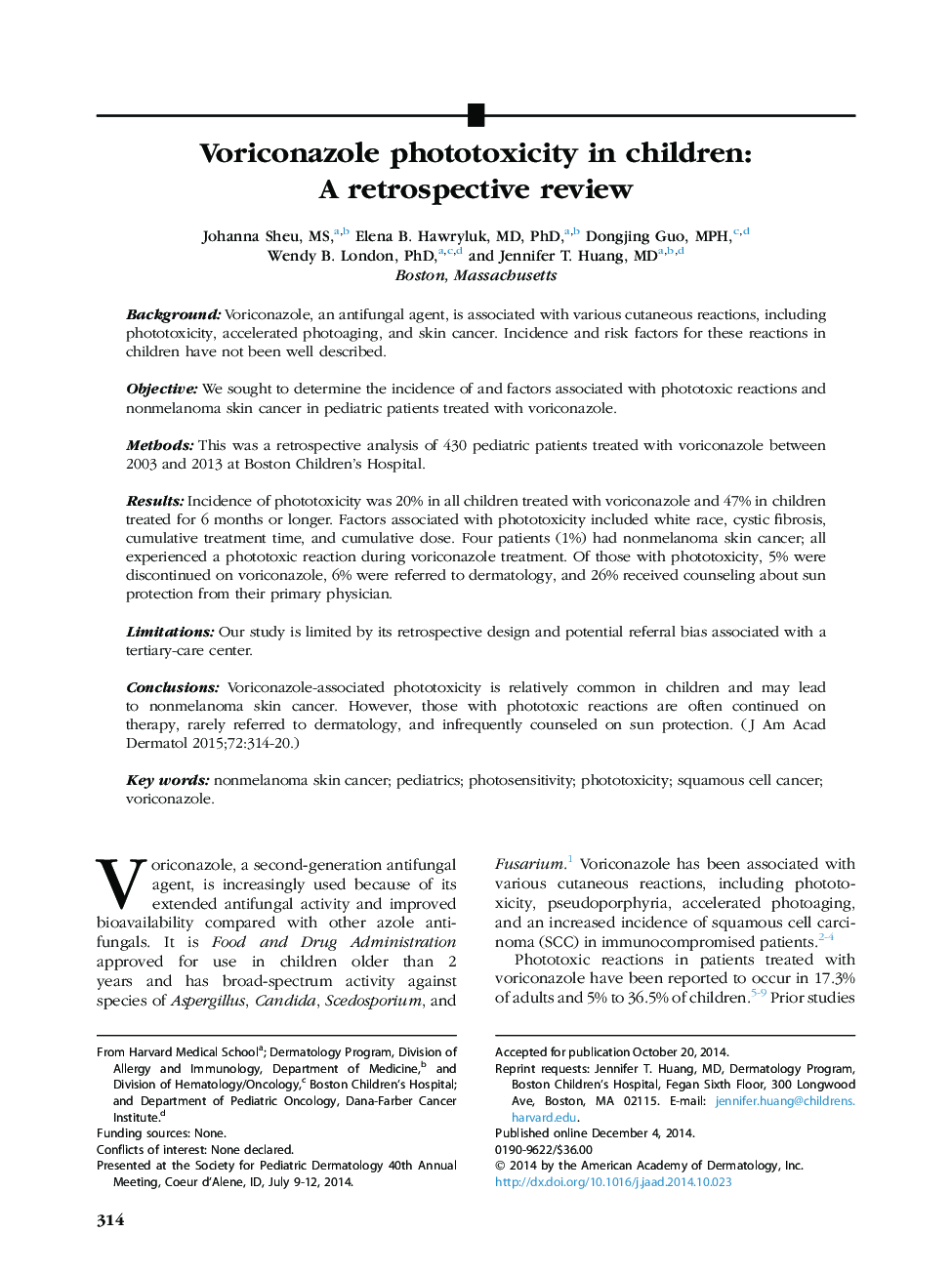| Article ID | Journal | Published Year | Pages | File Type |
|---|---|---|---|---|
| 3205021 | Journal of the American Academy of Dermatology | 2015 | 7 Pages |
BackgroundVoriconazole, an antifungal agent, is associated with various cutaneous reactions, including phototoxicity, accelerated photoaging, and skin cancer. Incidence and risk factors for these reactions in children have not been well described.ObjectiveWe sought to determine the incidence of and factors associated with phototoxic reactions and nonmelanoma skin cancer in pediatric patients treated with voriconazole.MethodsThis was a retrospective analysis of 430 pediatric patients treated with voriconazole between 2003 and 2013 at Boston Children's Hospital.ResultsIncidence of phototoxicity was 20% in all children treated with voriconazole and 47% in children treated for 6 months or longer. Factors associated with phototoxicity included white race, cystic fibrosis, cumulative treatment time, and cumulative dose. Four patients (1%) had nonmelanoma skin cancer; all experienced a phototoxic reaction during voriconazole treatment. Of those with phototoxicity, 5% were discontinued on voriconazole, 6% were referred to dermatology, and 26% received counseling about sun protection from their primary physician.LimitationsOur study is limited by its retrospective design and potential referral bias associated with a tertiary-care center.ConclusionsVoriconazole-associated phototoxicity is relatively common in children and may lead to nonmelanoma skin cancer. However, those with phototoxic reactions are often continued on therapy, rarely referred to dermatology, and infrequently counseled on sun protection.
